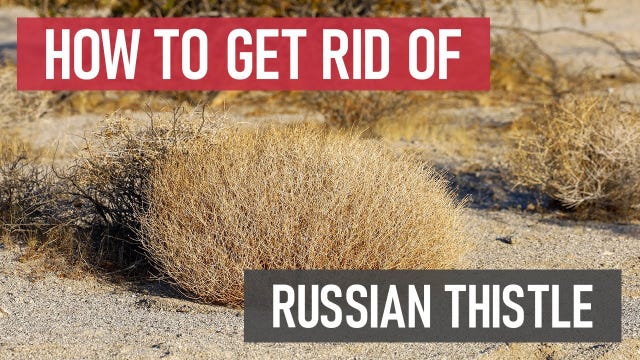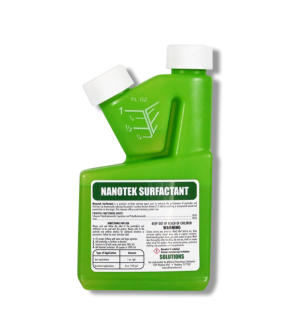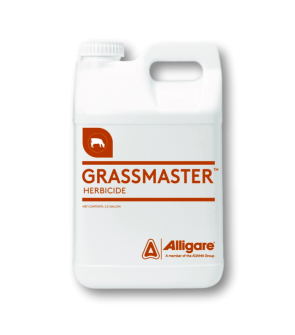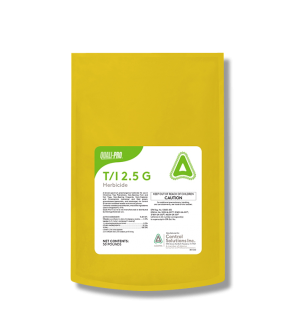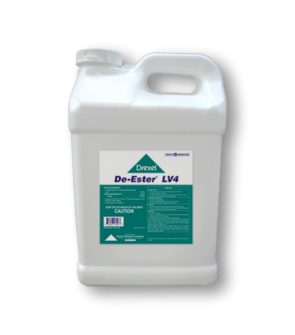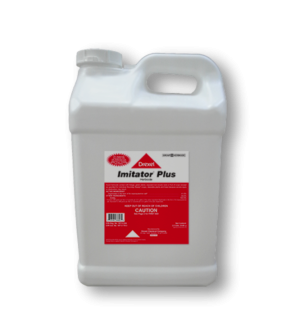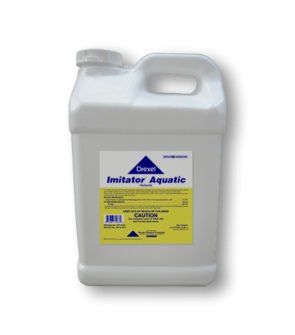Gain access to personalized product screening, the best pricing, rewards, and more!
Most Effective Products
Russian Thistle Control: How to Get Rid of Russian Thistle
This page is a general DIY guide for controlling Russian thistle. Using the suggested products and methods, you will get rid of Russian thistle. Follow this DIY article and use the recommended products, and we guarantee complete control of Russian thistle.
Russian thistle is a broadleaf summer annual weed common in the southwest portion of the United States. Homeowners usually notice this noxious weed more during the summer when it turns into a tumbleweed.
Usually, when homeowners think of Russian thistles, they picture its tumbleweed weed from tumbling down a dirt road due to Western films. Despite its common media depiction, Russian thistle, often known as tumbleweed, is not a native plant.
As its name suggests, this weed originates from southeastern Russia and western Siberia and was introduced to the United States by immigrants through contaminated flaxseed imported from Russia.
Since then, the Russian thistle has plagued many regions and has become a popular icon of the American West. This weed becomes dry when fully matured, readily catching fire in extremely hot weather. With tumbleweeds, aka Russian thistles, being weeds, they compete with desirable foliage for water, space to grow, and nutrients, and can even collide with cars or structures when fully matered.
Its ability to roll when fully matured, its sphere-like shape, and its numerous branches containing seeds allow Russian thistles to spread across numerous landscapes, dropping seeds as they go. To quickly control this prolific seed spreader, follow the products and steps listed throughout this easy to use DIY guide.
Identification
Before controlling Russian thistles, you must be sure you are dealing with an infestation of tumbleweeds or Russian thistles in your yard. Careless identification can lead you to use the wrong treatment methods, which can waste time and money. Here are typical traits of this weed to know what Russian thistle or tumbleweed looks like:

- Russian thistle, also known as tumbleweed, is a dense, intricate branch weed that forms a round bush or shrub measuring about one to three feet tall and five feet wide. When fully matured, it appears like a skeleton of a shrub.
- In its seedling and juvenile stage, this weed's leaves grow up to 2 inches in length, and each leaf is tipped with a sharp spike.
- Small, inconspicuous flowers grow at the base of the leaves where they meet the stem. The flowers lack true petals and grow up to one-fifth of an inch in diameter. They also have a pink or dark reddish center. Flowers will bloom from late summer to fall.
- These plants become brown and brittle at the end of their life cycle. They break off at the base, creating round, tumbling weeds.
- Have deep tap roots that grow over 6 ft. deep with extensive lateral roots over 5 ft.
Use the description and image above to help you properly identify Russian thistle or tumbleweed on your property. If unsure, contact us with a photo of your weed through email or in person at one of our store locations, where one of our representatives can examine the weed and recommend proper treatment control. If this is impossible, you may always phone our customer service team.
Inspection
Once you are confirmed that you are dealing with Russian thistle, you can move on to inspection. During this phase, you will locate areas where Russian thistle is thriving in your yard and observe the conditions allowing the weed to survive. This information will help you know where to apply your herbicide and treat these conditions to increase the product's effects.
Where to Inspect
Russian thistle grows in drier areas with disturbed or loose soils receiving little irrigation, such as along fences, paved areas, abandoned lots, crop fields, roads, highways, edge of lawns, driveways, sidewalks, in abandoned lots, field crops, vegetable crops, and underneath plants in poorly tended landscapes and gardens.
Since this weed survives on little irrigation and easily overtakes disturbed lands with little native foliage, it will not do well in well-maintained gardens, landscapes, and lawns.
What to Look For
It can be seen in its seedling stage in late April, which resembles a small brush. From late June to August, the leaves become shorter in length and lose their soft flexibility by becoming stiff with sharp, pointed stems.
During the fall and early winter months, the Russian thistle begins to die and break off from its roots at the base of the stem, turning into tumbleweed and rolling wherever the wind takes it.
Besides the colorful flowers, the Russian thistle is most noticeable when piles of moveable round shrubs blow across your property until it's pushed against a structure.
This weed will germinate when temperatures are between 52 and 90 degrees Fahrenheit.
Treatment
Once you have confirmed that Russian thistle or its later-developed stage tumbleweed is infesting your property, you can treat it with herbicides. However, you must wear the proper personal protective equipment (PPE) when using any herbicide.
Treating the Russian thistle when young and actively growing is the best form of control. If allowed to reach more mature stages, it becomes more difficult to control due to its extensive root system.
Fortunately, Russian thistle can be controlled with pre-emergents containing either bromacil, chlorsulfuron, imazapyr, oryzalin, isoxaben, trifluralin, or pendimethalin between late April and August. Apply a herbicide containing one of these active ingredients before the Russian thistle begins to grow at least two to three weeks prior.
If you missed your pre-emergent window, proceed with a post-emergent herbicide formulated with one of the active ingredients such as 2,4-D, glyphosate, triclopyr, paraquat, glufosinate, or dicamba from late June to November. It would be best to spray the weed when it is relatively young before it reaches 4 inches in diameter.
Step 1: Apply Pre-Emergent Late April to August
If you are treating weeds in ornamental landscaping or non-crop areas, check out Quali Pro T/I 2.5 G Trifluralin Herbicide.
Quali Pro T/I 2.5 G Trifluralin Herbicide is a selective pre-emergent herbicide formulated with the active ingredient isoxaben .05% and Trifluralin 2.0% to control germinated weeds like Russian thistle effectively.
With one application, this product offers 8 months of selective, residual control in non-cropland sites and ornamentals (container and field-grown, groundcovers/perennials, and landscape).
Keep in mind this product cannot be applied in turfgrasses.
Determine how much Quali Pro T/I 2.5 G Trifluralin Herbicide to use by measuring the square footage of the treatment area. To do this, measure the length and width of the treatment site in feet, then multiply (length X width = square footage). For acreage, divide the square footage by one acre (square footage / 43,560 sq. ft. = acre).
Apply 2.3 lbs. of Quali Pro T/I 2.5 G Trifluralin Herbicide per 1,000 sq. ft. of treatment area.
We recommend using a handheld or push spreader to make applications with this product. After calibrating your spreader to the proper ratio, load the correct amount of Quali Pro T/I 2.5 G Trifluralin Herbicide.
Spread the granules over smooth soil surfaces that are free of clods. Water the treated areas with 0.5 inches of water 3 days after application.
Step 2: Apply Post-Emergent Herbicide from Late June to November
2,4-D Amine Selective Post-Emergent Herbicide is an emulsifiable concentrate designed with the active ingredient Dimethylamine Salt of 2,4-D 46.8% to protect most cool-seasoned turf and crops from unwanted broadleaf weeds like Russian thistle.
Fahrenheit Herbicide is a post-emergent herbicide formulated with Dicamba 33% and Metsulfuron-methyl 5% to kill various weeds, such as Russian thistle, in warm-seasoned turf.
Spot applications in cool-seasoned turf to control Russian thistle will use a rate of 1/4 pint of 2,4-D Amine Selective Post-Emergent Herbicide with 3 gallons of water.
To perform spot applications in warm-seasoned turf, mix 0.2 oz. of Fahrenheit Herbicide in 1 gallon of water per 1,000 sq. ft. Larger applications will use 6 to 12 oz. of product in 20-80 gallons of water per acre.
Remember that temporary stunting or chlorosis may occur when making applications over St. Augustinegrass, Bermudagrass, or Zoysiagrass.
For either of these products, we recommend using Nanotek Surfactant. Nanotek Surfactant is a non-herbicide product designed to improve the adhesion and penetration of pesticides onto treated surfaces.
When using Nanotek, add 1 fl. oz. per 1 gallon of solution.
Fill your sprayer with half the required water, add a measured amount of herbicide material, and then pour in the other half of the water. Shake until solution is thoroughly mixed.
Apply the mixed solution to the top and bottom of the foliage leaves until wet on a fan spray setting, but not to the point of runoff.
Do not let people or pets enter treated areas until 48 hours after application.
Reapplication intervals with 2, 4-D Amine Selective Post-Emergent Herbicide range from 21 to 30 days, and those with Fahrenheit Herbicide range from 4 to 6 weeks.
Prevention
Once you have eliminated Russian thistle from your property, you must implement some preventative measures. Following these preventative practices will help to prevent Russian thistle or tumbleweed from returning to your property.
- Mowing is best done when the Russian thistle first blooms. Otherwise, mowing after this stage can help to spread the seeds and further spread the infestation across your property. Mow your grass at proper intervals to maintain a thick growing density.
- When Russian thistle is in the early stages of growth, you may hand-pull it out with a glove-covered hand or use a light tilling method with a garden hoe. However, it's not recommended to hand-pull Russian thistles in later growth stages as the weed becomes stiffer and sharper.
- After mowing, hoeing, and weed pulling, collect all dislodged pieces of Russian thistles and immediately dispose of them. Leaving any remnants of Russian thistles or tumbleweeds can produce seeds for regrowth of infestation.
- Russian thistle is intolerant to shade and thrives on disturbed sites. Regular fertilization should be established to encourage competing plant growth and avoid disturbing the terrain more than necessary. For rangelands, this may mean adjusting animals to graze on other parts of the property on a rotation schedule.
- Water your property's foliage with an inch of irrigation to maintain moist soil, but not to the point of being overwatered. This will also help to encourage new plant growth to choke out young Russian thistle.
- Reapply pre-emergent herbicides such as Quali Pro T/I 2.5 G Trifluralin Herbicide during the germination period of late April to August. To control Russian Thistle, apply 2.3 lbs. of product per 1,000 sq. ft. After application, water the product with at least half an inch of water. Keep in mind this product is not to be used on turf.
- Promptly treat any emerging Russian thistles with 2,4-D Amine Selective Post Emergent Herbicide or Fahrenheit Herbicide. Typically, this will be late June to November.
Key Takeaways
What is Russian Thistles?
- Russian thistle is a summer annual broadleaf weed usually found in dry, disturbed sites such as pastures or along fences. In its later stages of growth, this weed develops wider branches and becomes brittle. When fully mature, most people recognize the Russian thistle as a tumbleweed.
How to Get Rid of Russian Thistle
- To get rid of Russian thistle or tumbleweed, apply a post-emergent such as 2,4-D Amine Selective Post Emergent Herbicide or Fahrenheit Herbicide.
Preventing Russian Thistle Reinfestation
- Prevent more Russian thistles and tumbleweeds from returning to your property by making pre-emergent applications with products like Quali Pro T/I 2.5 G Trifluralin Herbicide from late April to August. You will also need to implement other cultural practices, such as watering your yard and foliage with an inch of irrigation to maintain moist soil and encourage new plant growth. Russian thistles are intolerant to shade and not a strong competitor with dense vegetation.






